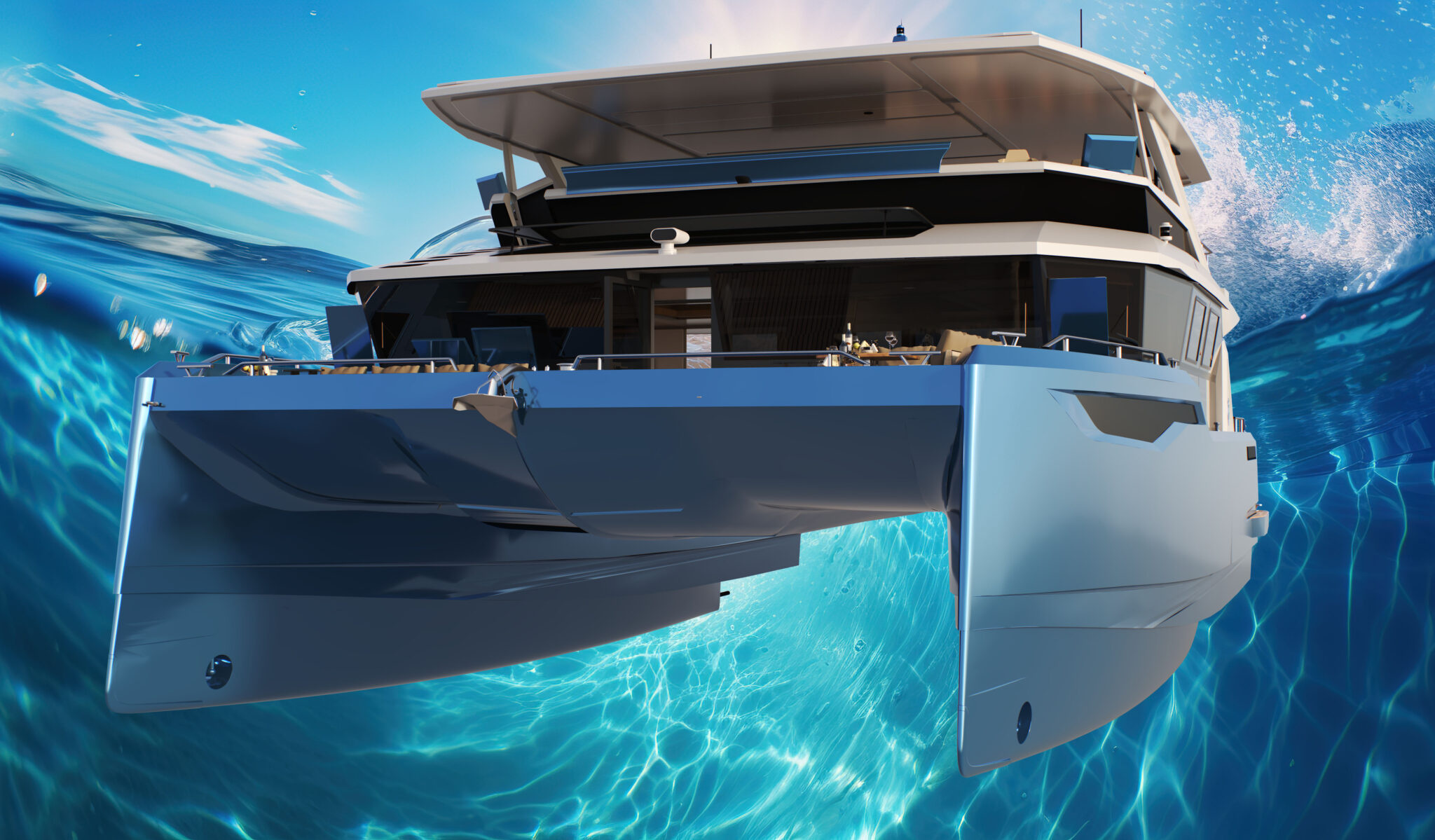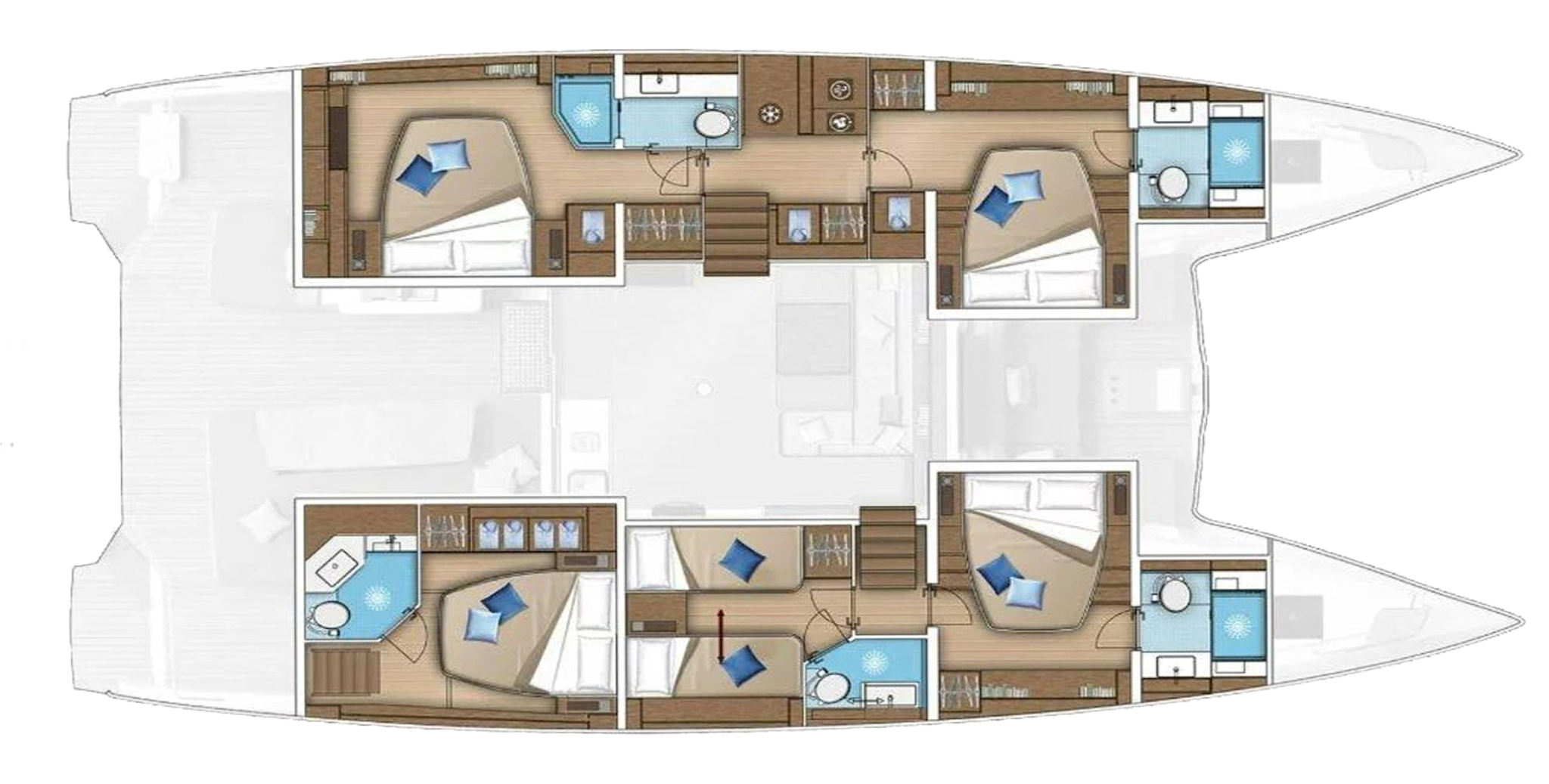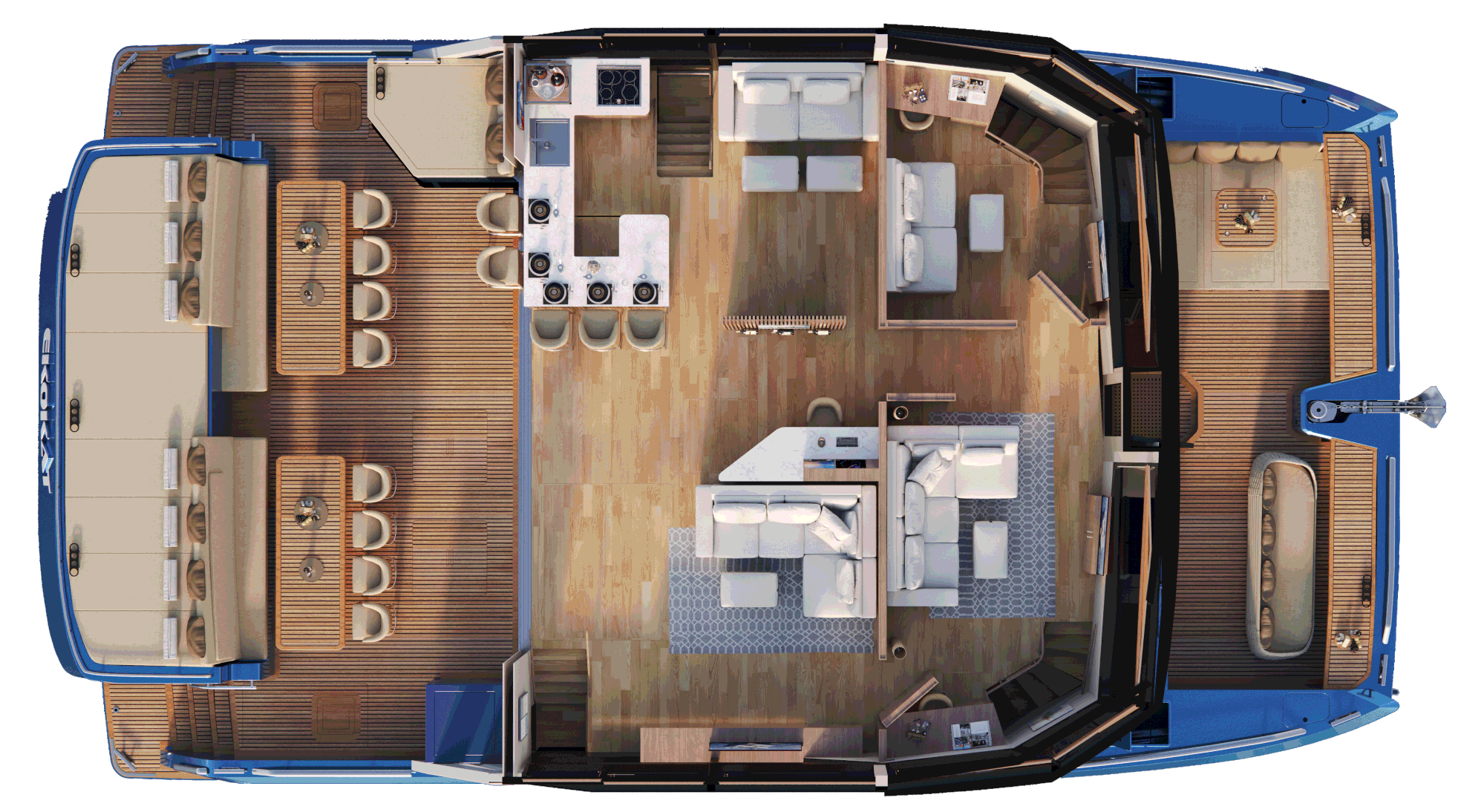All Bedrooms Main-Deck
EkoKat Helps to Prevent Sea Sickness
EkoKat
How can I best help prevent getting seasick on a boat?
The very quick answer is do NOT sleep or spend long periods of time down in the hulls of a catamaran with limited and single direction views of the horizon.
Sea sickness is horrible. Most people have suffered from it at some stage and many people suffer from it a lot. Statistically 70% of people suffer from motion sickness given the wrong conditions. Regardless of how big the yacht is, did you know that sleeping in bedrooms that are located down in the hulls of a boat is one good way to encourage motion and sea-sickness?
Down at waterline level in the hulls of a catamaran there is very little, and only one directional views of the horizon. The hulls are also spaced wide apart so there is a lot of vertical up and down motion as well as horizontal swaying. This can easily and unexpectedly upset our inner gyroscope and is what most commonly causes motion sickness.
If sea sickness sets in, the unlucky individual is in for a rough ride and there is very little that can be done other than to get them ashore as soon as possible. This can be challenging, especially at night as well as being very disruptive, so the sufferer is in for a serious ordeal.
Have you noticed over recent years how even yacht galleys down at waterline level in the hull/s are almost nonexistent on owner-operated yachts, and even main-deck galleys are more and more now located aft, right next to the open cockpit doors close to the outside and fresh air? Very few people like to go down below the main deck to cook food. The same applies to sleeping.
Yachting can be and is a wonderful experience. For anyone who does or occasionally does suffer, the single most important thing and number one rule to consider is NOT to sleep anywhere near or in the hulls, down below the main deck level.
Catamarans have 2 narrow hulls instead of 1, so this also creates cramped accommodation. However other yacht brands may spin their sales pitch, as can be seen from this image, sleeping down in the hulls at waterline level cannot possibly be a particularly desirable experience.


Traditional catamaran layout. Even with larger catamarans, the 2 separate hulls are small and narrow in relation to monohull boats, so bedroom accommodation is always going to be cramped. It will always be the least favoured part of the boat for seasickness sufferers, the views outside and of the horizon are restricted, and there is no instant access to the outside decks and fresh air.

EkoKat Bedrooms are ALL at main-deck level. This unquestionably helps prevent seasickness, as well as providing large airy spacious accommodation with panoramic view and instant access to the outside deck areas. It also enables EkoKat to use space available in the hulls for 4 superyacht sized bathrooms, as well as over 1 ton of solar powered batteries for the ships systems
Compare sleeping in the hulls with a typical EkoKat full-beam master suite.
EkoKat is the only power catamaran that provides you with the best possible fail-safe option for preventing sea-sickness. ALL of our guest suites are located at main-deck level where we have large panoramic windows all around the boat to make sure you constantly catch site of the horizon and have direct access to the outside deck areas.
Our beds are also not right on the far sides of the boat where the most swaying motion is experienced both upwards and downwards and sideways.
Safety also importantly comes into play, with all of our bedrooms having safe and instant access to the outside decks and fresh air.
How have we done it when the main deck is traditionally used for the salon/lounge? Enter the EkoKat multifunctional Penthouse Apartment (salon). By day a huge open plan living space that by night using voice controlled electric walls transforms into a 3 or 4 bedroom Presidential Suite.
See this short video which demonstates.
Seasickness is a form of motion sickness and a normal response to specific motion stimuli, often experienced on a boat when a person is exposed to unfamiliar movements. It is provocative motions that induce motion sickness. Technically speaking it is repeated accelerations in the inner ear balance centre, generated by the wave’s movement of the boat, that cause us to be sick. You are more likely to get seasick in vast swells. On a boat at sea we are exposed to moves in six degrees of motion, up/down, forward/back and right/left, and rotation around 3 axes.
Catamarans are unquestionably more ‘stable’, provide less ‘roll’ and a more comfortable ride than single hull boats, and there is a difference in the motion between catamarans versus single-hulled boats, however the result for those that usually get seasick is the same. If you get seasick on one type of boat you will usually get seasick on the others. It is widely accepted as a matter of principal, the catamaran’s major benefit over a monohull when it comes to seasickness is the large bridgedeck spaces that join the hulls, such as the salon and cockpit. In EkoKats case therefore as our bedrooms are located effectively on the bridgedeck this is by far the best place to sleep.

